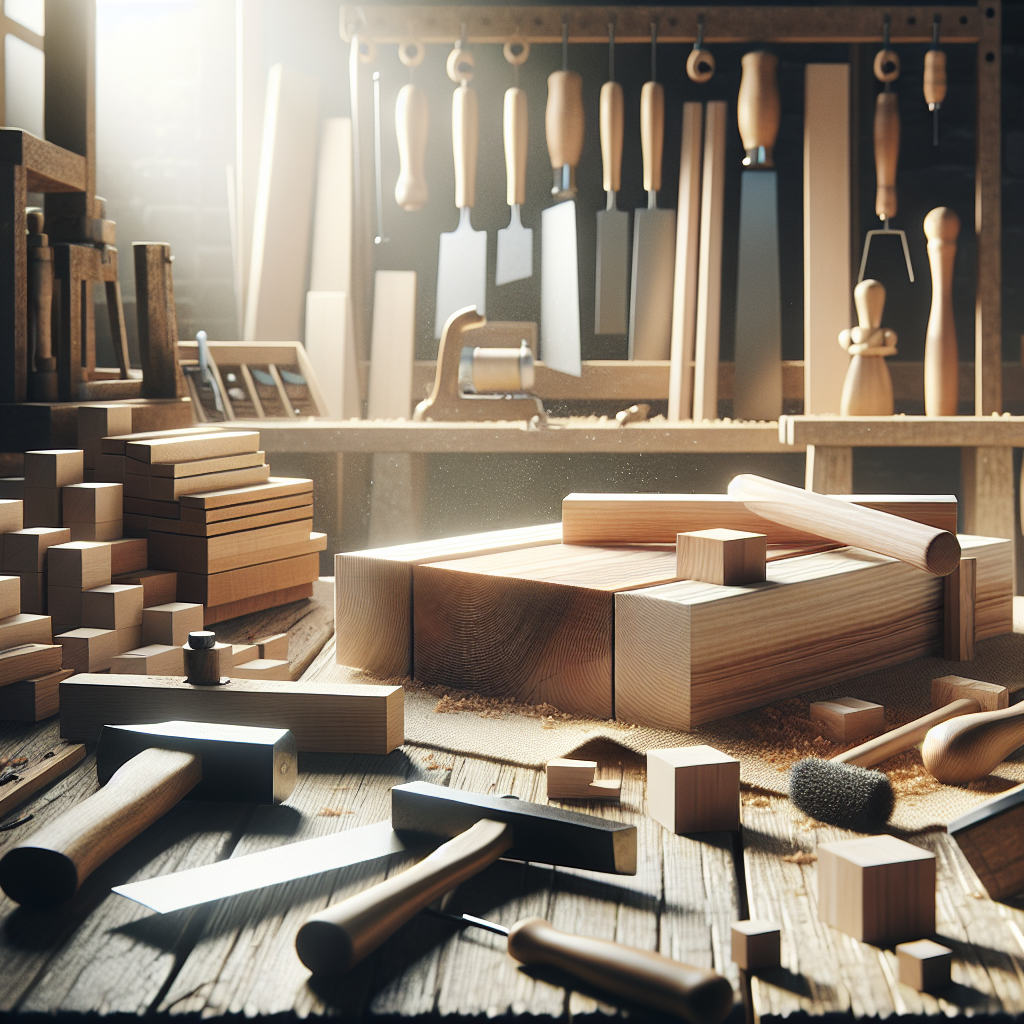Woodworking is a rewarding and creative hobby that allows individuals to transform raw materials into functional and beautiful pieces. If you are new to woodworking, the journey may seem daunting at first, but with the right guidance and resources, you can develop the skills needed to create amazing projects. This guide will provide you with essential information to help you get started on your woodworking adventure.
Understanding the Basics of Woodworking
Before diving into woodworking, it’s crucial to understand what it entails. Woodworking involves cutting, shaping, and assembling wood to create various items, ranging from furniture to decorative pieces. The first step is to familiarize yourself with different types of wood and their properties. Softwoods, such as pine and cedar, are easier to work with, making them ideal for beginners. Hardwoods, like oak and maple, offer durability but can be more challenging to manipulate.
Another key aspect to consider is the variety of woodworking techniques. These can range from simple joinery methods to advanced carving and finishing techniques. As a beginner, focus on mastering basic skills, such as measuring, cutting, and sanding. These foundational skills will serve as the building blocks for more complex projects in the future.
Additionally, understanding the tools used in woodworking is essential. Basic tools include a saw, hammer, drill, and measuring tape. As you progress, you may want to invest in more specialized too Welcome to Build Stuffls, but starting with the essentials is sufficient for most beginner projects. Each tool has its purpose, and knowing how to use them safely and effectively will enhance your woodworking experience.
Setting Up Your Woodworking Space
Creating a dedicated woodworking space is vital for both safety and productivity. Ideally, your workspace should be well-ventilated, organized, and equipped with proper lighting. If you have a garage, shed, or basement, these can serve as excellent locations for your woodworking activities. Ensure that your workspace is large enough to accommodate your projects and tools, allowing you to work comfortably.
Safety should be a top priority in your woodworking space. Invest in safety gear such as goggles, ear protection, and a dust mask to protect yourself from debris and noise. Additionally, keep a first-aid kit handy and ensure that your workspace is free from clutter to minimize the risk of accidents. Establishing a safe environment will allow you to focus on honing your skills without unnecessary distractions.
As you begin to work on your projects, consider starting with small, simple items. These could include birdhouses, picture frames, or small shelves. Completing these beginner projects will help you gain confidence and experience. As you become more comfortable with your skills, you can gradually tackle more complex designs that challenge your creativity and craftsmanship.
As you embark on your woodworking journey explore our blog, understanding the essential concepts and skills is crucial for success. Woodworking is not just about cutting wood; it’s about creativity, precision, and a deep appreciation for the craft. Whether you’re looking to create furniture, decorative items, or practical tools, laying a solid foundation will enhance your experience and results.
Essential Tools and Materials for Beginners
Starting out in woodworking requires a basic set of tools that will allow you to execute various projects effectively. A good handsaw, a reliable power drill, and a set of chisels are fundamental tools every beginner should have. Additionally, investing in a quality workbench can provide a stable surface for your projects, making the crafting process much smoother. As you progress, you may want to explore more specialized tools, but these essentials will get you started on the right foot.
When it comes to materials, choose wood that is easy to work with, such as pine or poplar. These types of wood are forgiving for beginners, allowing for easier cutting and shaping. As you gain confidence and skills, you can experiment with harder woods like oak or walnut, which offer different challenges and aesthetics. Always remember to consider the purpose of your project when selecting materials, as this will influence both the functionality and the final look.
Moreover, it’s crucial to familiarize yourself with safety equipment. Proper safety gear, including goggles and gloves, will protect you from potential hazards creativity and storytellingwhile working with tools and materials. Understanding the safety protocols associated with each tool will help you create a safe workspace and prevent accidents.
Learning Techniques and Building Skills
Once you have your tools and materials, the next step is to learn various woodworking techniques. Start with the basics, such as measuring, cutting, and joining wood. Mastering these fundamental skills will give you the confidence to tackle more complex projects in the future. Consider watching instructional videos or attending local workshops to gain hands-on experience. Many communities offer classes tailored for beginners, which can provide valuable guidance and support.
As you progress, try your hand at simple projects like a birdhouse or a small shelf. These projects are manageable and will help you practice your skills while providing a sense of accomplishment. Remember that mistakes are part of the learning process; each error is an opportunity to improve. Keeping a journal of your projects can be beneficial, allowing you to reflect on what worked well and what could be improved.
Moreover, engaging with the woodworking community can provide inspiration and valuable insights. Joining forums, social media groups, or local clubs can connect you with experienced woodworkers who can share tips, techniques, and project ideas. This community support can be incredibly encouraging, especially when you face challenges or need advice on specific techniques.
Finally, as you become more comfortable with your skills, don’t hesitate to experiment with your style. Woodworking is an art form, and personal expression is key. Explore different finishes, joinery methods, and design concepts. Allow your creativity to flourish as you transform your ideas into tangible creations. The journey of woodworking is as rewarding as the finished products you will create, so embrace each step along the way.
